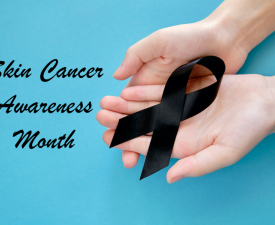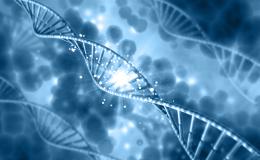What Are the Signs and Symptoms of Melanoma and Nonmelanoma Skin Cancer?
May 25, 2021
Skin cancer is the most common cancer worldwide, and the disease can be divided into two types: melanoma and nonmelanoma skin cancers.

While melanomas make up only about 1% of all skin cancer diagnoses, melanomas actually cause the majority of skin cancer deaths. The incidence of melanoma, in particular, has steadily increased in the past few decades for certain age groups,1 prompting awareness campaigns aimed at reducing risk factors, such as ultraviolet (UV) light exposure, and recognizing potentially dangerous lesions, or changes in one area of the skin compared to another. In recognition of Melanoma and Skin Cancer Awareness Month this May, we highlight the signs and symptoms of both melanoma and nonmelanoma skin cancer and which lesion characteristics may warrant evaluation by a doctor.
Melanomas and nonmelanoma skin cancers develop in the skin, and while many skin cancers occur in areas of the body that receive a high amount of UV exposure, skin cancers can occur in places that rarely, if ever, receive exposure to UV light. The two most common forms of nonmelanoma skin cancer are basal cell carcinoma (BCC) and squamous cell carcinoma (SCC) of the skin. We will focus on the signs and symptoms of BCC and SCC here, with the understanding that other, rarer forms of nonmelanoma skin cancer do exist.
Melanomas sometimes evolve from existing moles, but they can also develop on normal skin. The first indications of melanoma are typically a change in a normal, existing mole or the development of an abnormal lesion on the skin. There are 5 characteristics of moles that may indicate the lesion is cancerous, and each feature can be recalled by remembering the first five letters of the alphabet:
- A = Asymmetrical shape
Normal moles are typically round or oval in shape. Cancerous moles may have an irregular shape. - B = Irregular border
Most moles have a defined border. Melanomas may have irregular borders. - C = Changes in color
Cancerous moles are more likely to have more than one color or differences in
color intensity. - D = Diameter greater than ¼”
Most normal moles do not exceed ¼” in diameter. - E = Evolving
Changes in shape, color and/or size of a mole may indicate the lesion is
cancerous.
Some cancerous moles may have all of these characteristics, while others may only exhibit one. Moles or lesions that consistently itch or bleed may also be cancerous. It is important to have a physician or dermatologist evaluate any concerning moles or other skin lesions.2
Basal cell carcinomas of the skin may have a different appearance than melanomas and may present as a sore that won’t fully heal. Lesions typically appear on sun-exposed areas but can form anywhere on the body. BCCs of the skin may also look like:
- A translucent bump that is either white, pink or the color or your skin. This type of BCC typically forms on the ears and face and may bleed and scab over.
- A lesion that is blue, black, brown or has dark spots. The lesion border is also raised and translucent.
- A patch that is red, scaly and flat and has a raised edge. This type of lesion usually occurs on the chest or back and may grow in size.
- A lesion that is white and waxy in appearance and lacks a clear border.
Although BCCs rarely metastasize (move) to other parts of the body, people with suspicious lesions or recurring sores should be evaluated by a physician.3
Squamous cell carcinomas of the skin also typically develop on sun-exposed areas of the skin but can appear anywhere on the body. SCCs may present as a sore that won’t completely heal. SCCs of the skin may also look like:
- A red nodule that is firm to the touch
- An area of red, scaly skin near the lip that may turn into a sore
- A red, raised patch of skin or sore that may be present on or in the anus or genitals
- A sore or rough area of skin inside the mouth
- A flat, scaly sore that crusts over
- A growth or sore on an existing scar or ulcer
SCCs are not usually aggressive cancers, but they do need to be treated promptly in order to prevent excessive growth and/or metastasis. Any suspicious lesions or sores that won’t heal after two months should be evaluated by your doctor.4
There are a wide variety of possible skin cancer diagnoses, and some of those diagnoses may be life-threatening. Patient education is a highly effective tool for skin cancer screening, as individuals can regularly and frequently screen themselves for suspicious and evolving skin lesions. With most every cancer, early detection and treatment can make all the difference in disease prognosis and future quality of life.
Kailos Genetics developed the ExpedioTM Hereditary Cancer Screening test to detect pathogenic variants in 33 genes associated with hereditary cancer syndromes. To learn more about ExpedioTM, click here, or contact us with any questions you may have about genetic screenings.




